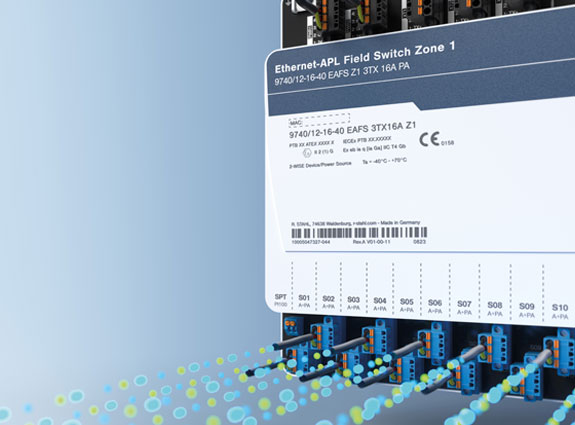Hydrogen plays a key role as an energy source and energy storage medium in the transition to a carbon-neutral economy and society. In the joint project "Standardisation Roadmap for Hydrogen Technologies", the aim is to collaborate with experts from all areas of the hydrogen value chain to actively support the market scale-up of hydrogen and establish the necessary high-quality infrastructure. Prof. Dr. Arnhold is involved in the project as Head of the Working Group for Explosion Protection. In the following interview, he explains what the project is all about.
Prof. Dr. Arnhold, the joint project "Standardisation Roadmap for Hydrogen Projects" was launched recently. Can you tell what this project involves?
Prof. Dr. Arnhold: I'd be happy to. The joint project "Standardisation Roadmap for Hydrogen Technologies" is a collaborative project undertaken by a number of organisations – including the German Institute for Standardization (DIN), the German Association for Gas and Water (DVGW), the German Association for the Machinery and Equipment Manufacturing Industry (VDMA), the Association of German Engineers (VDI), the German Commission for Electrotechnical, Electronic & Information Technologies (VDE/DKE) and the German Association for the Standardisation and Further Development of the Railway System (NWB).
The project is funded by the Federal Ministry for Economic Affairs and Climate Action of Germany (BMWK) and has multiple aims, including coordinating and integrating national regulations and the interest groups involved, integrating with European and international initiatives for hydrogen standardisation, adopting an agreed, national process for Germany and transferring the drafted regulations to European and international level, covering the entire value chain of hydrogen technologies and launching targeted standardisation projects.
How are you and R. STAHL involved in this project?
Prof. Dr. Arnhold: As a leading international supplier of explosion protection solutions, we are of course involved in drafting this national roadmap and implementing these ambitious objectives. In particular, in the working group for explosion protection we will contribute our expertise and decades of experience in using highly flammable hydrogen gas. Over 90% of our products have IIC approval and are therefore suitable for use in hydrogen systems. This would also cover secondary explosion protection for many new technologies which require hydrogen as an energy source, storage medium and raw material for the post-fossil-fuel era.
The working group for explosion protection expects that there will be much more work to do when it comes to primary explosion protection. There is still a lack of international regulations governing the tightness of systems, for example. In Germany, these have been successfully used for a number of years in TRGS 722 in the form of the categories "technically tight" and "permanently technically tight". Experts have a great deal of work ahead of them in terms of tertiary or design-related explosion protection too.
What challenges are involved in using hydrogen, particularly with regard to safety?
Prof. Dr. Arnhold: Hydrogen is extremely flammable and has a very broad explosion range. And that's not all – it burns eight times faster than hydrocarbons. This poses particular requirements for the design of flame arresters, rupture discs and safety valves.
In view of the fact that in future Germany will not be able to meet its high demand for hydrogen domestically, tailored safety concepts must be developed for the necessary international value streams and documented in the form of international standards.
In order to achieve the required general level of safety, it is crucial that all stakeholders develop sufficient awareness of hazards and acquire considerable expertise in using hydrogen. This means that the sharing of information and knowledge also has an important part to play in the new standardisation initiative.
For some time now, R. STAHL has offered an excellent selection of training and advisory services relating to explosion protection for this purpose. It goes without saying that these also cover the use of hydrogen. Since the new hydrogen technologies will, however, entail more far-reaching safety challenges, we have teamed up with the Steinbeis Research Centre for Innovations in Explosion Protection, which offers an extensive range of training courses on general safety-related topics associated with hydrogen technologies.






![[Translate to Englisch:] [Translate to Englisch:]](/fileadmin/user_upload/mitarbeiter/01_DE/07_Blog/00_Allgemein/blog-explosionsschutz-rstahl-startseite-279x205.jpg)
![[Translate to Englisch:] [Translate to Englisch:]](/fileadmin/user_upload/mitarbeiter/01_DE/07_Blog/00_Allgemein/blog-explosionsschutz-rstahl-ueber-den-blog-279x205.jpg)
![[Translate to Englisch:] [Translate to Englisch:]](/fileadmin/user_upload/mitarbeiter/01_DE/07_Blog/00_Allgemein/blog-explosionsschutz-rstahl-autoren-279x205.jpg)
![[Translate to Englisch:] [Translate to Englisch:]](/fileadmin/user_upload/mitarbeiter/01_DE/07_Blog/00_Allgemein/blog-explosionsschutz-rstahl-newsletter-expert-mail-279x205.jpg)
Write new comment